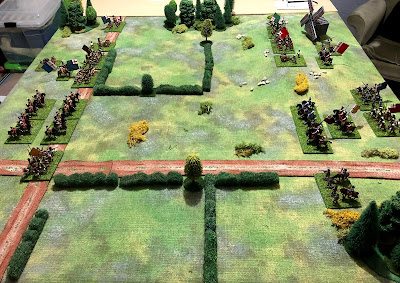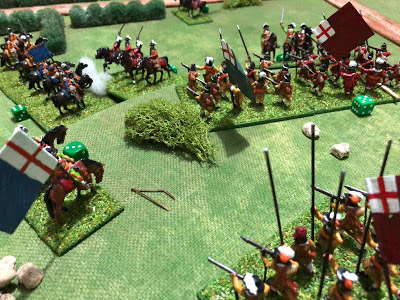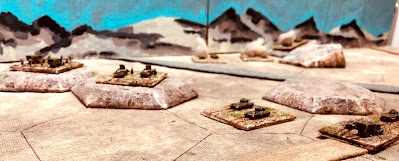After a couple of weeks playing a number of English Civil War games and working through some rule changes, it was time to put aside the ECW rules for a couple of weeks and return to them later with a fresh set of eyes. This break gives me an opportunity to return to the WW2 Western Desert campaign.
The campaign is currently at turn 10 with a third and deciding game to be played. Earlier in turn 10 the initial 21st Panzer division's attack had failed to make a breakthrough against the 7th Armoured division, but the 15th Panzer were, after a hard fought engagement, were able to defeat the South African Infantry division. This third attack has the Ariete Armoured division launching an attack on the 1st Armoured division.
 |
| The campaign map |
Dice and terrain cards decided the type of engagement and terrain the using the approach written up here. The Ariete division are making at frontal assault on the 1st Armoured division who are defending the town and ridge North-East of town (South is top in the photographs). A third of the Allied forces are held in reserve and can arrive one unit at a time on any turn.
 |
| Objectives and attack plans |
 |
| Allied units in their defensive positions on the ridge and around the town. |
 |
| Italian forces move forward. |
The orders of battle are:
Elements of the 1st Armour division...
- 1 x Honey tank
- 2 x Crusader tanks
- 3 x Grant tanks
- 2 x Infantry units
- 2 x AT units (2 pounder and 6 pounder)
- 2 x Artillery units (25 pounder and Bishop)
Elements of the Ariete Armoured division...
- 2 x Semovente 75mm
- 5 x M13/40 tanks
- 2 x Autoblinda armoured car units
- 1 x Artillery unit
- 1 x AT unit
- 2 x Infantry units
The game report to follow soon.

























